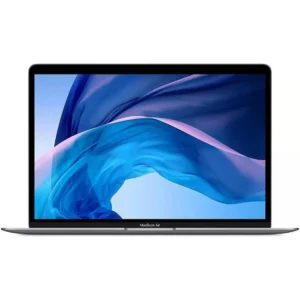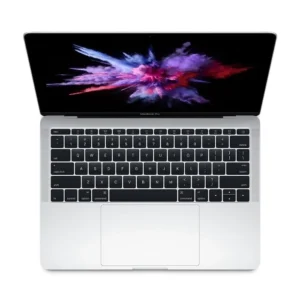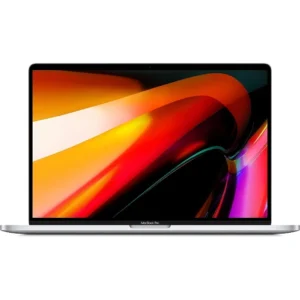How Much Storage Capacity Do I Need When Buying a MacBook? Uncover the Best Option for Your Refurbished MacBook in 2024!
When buying a refurbished MacBook, one of the most crucial decisions you’ll make is selecting the right storage capacity for your requirements. This guide will help you determine the ideal storage capacity for your needs, ensuring your MacBook performs optimally, for seamless trouble free usage, whether you’re a student, professional, creative, or casual user. In this guide, we’ll cover various types of hard drives, typically a traditional hard disk drive (HDD) or solid state drive (SDD), but our focus today is primarily on the capacity (size) of these drives, a crucial aspect applicable to all storage devices. It’s worth noting that modern MacBooks and laptops now all come equipped with the higher performing SSD drives.
- What is "Storage Capacity"?
- What Storage Options Are Available on a MacBook?
- Don't Confuse Storage With Ram
- Does Storage Capacity Affect the Speed of my MacBook?
- How much can I store on 128GB, 256GB, 512GB, 1TB, 2TB drive?
- Storage Calculator
- Cloud Storage Consideration
- What is the most common storage capacity?
- How many images can I store on my MacBook?
- Choosing the Right Storage Capacity for Your Needs
- Future Storage Requirements
- External Storage
- Conclusion

What do we mean when we say "Storage Capacity"?
Storage capacity refers to how much data a device, such as a MacBook, can store. Your data resides on the device’s storage drive, commonly referred to as the hard disk drive (HDD) or solid state disk (SSD). Your data consists of various file types, including images, documents, operating system data and programs, all of which are locally stored on your machine. Storage capacity is measured in bytes and their multiples: kilobytes (KB), megabytes (MB), gigabytes (GB), terabytes (TB), and beyond. Refurbished MacBook Pros and refurbished MacBook Airs commonly list storage capacities in GB or TB.
Don't Confuse Storage with Ram Memory
It’s essential not to confuse storage capacity with RAM (Random Access Memory). Storage, such as a hard refers to the long-term storage of files, applications, and operating system data. In contrast, RAM is a type of volatile memory used for short-term tasks and actively running programs. RAM allows your MacBook to access data quickly while it’s in use but does not retain information when the computer is turned off. While both storage and RAM are crucial for a computer’s performance, they serve different purposes: storage for long-term data retention and RAM for temporary data processing and multitasking. Understanding this distinction helps in making informed decisions about upgrading or maintaining your MacBook Pro’s performance. To identify the RAM specification, this is typically either 4GB, 8GB, 16GB, 32GB on a refurbished MacBook.
What Storage Options Are Available on a MacBook?
- 128GB
- 256GB
- 512GB
- 1TB (1024GB)
- 2TB (2048GB)
- 4TB (4096GB)
Firstly, in order to decide which storage capacity is suitable for you, we need to discover the storage options that are available.
Typically, most MacBooks are sold with either a 128GB, 256GB, 512GB, 1TB (1024GB), 2TB (2048GB), 4TB (4096GB) storage capacity.
To give an indication of current availability, the most recent MacBook Air, at the time of writing this guide in June 2024, is sold with either a 256GB or 512GB as standard, and can be customised to 1TB or 2TB.
You’ll find that these are the most common storage options for a MacBook and most laptops.
Interestingly, this has been the case for over the past decade and consequently refurbished MacBooks are sold with the storage options as brand new.
Does Storage Capacity Affect the Speed of my MacBook
Whilst storage capacity isn’t normally seen as a consideration for the performance of your MacBook, this shouldn’t be completely overlooked. The storage capacity of your MacBook can indeed affect its speed, but the impact varies depending on the type of storage drive (HDD or SSD) and how you use your MacBook. Here’s how storage capacity influences speed:
Impact of Storage Capacity on performance:
- SSDs: Larger capacity SSDs tend to have slightly faster read/write speeds due to more advanced controllers and more flash memory channels.
- HDDs: With HDDs, performance can degrade as the drive fills up and reaches near full, leading to slower access times and reduced overall speed.
Practical Considerations:
- Operating System and Applications: Faster storage speeds (especially with SSDs) contribute to quicker boot times, faster application launches, and snappier overall performance.
- File Management: Adequate storage capacity ensures sufficient space for your files and applications without slowing down the system due to excessive fragmentation or near-full drives.
While storage capacity alone does not directly determine the speed of a MacBook, opting for a larger capacity storage generally results in better overall performance and responsiveness. It ensures that your MacBook can handle larger amounts of data efficiently and maintains consistent speeds over time. Therefore, choosing an appropriate storage capacity, particularly with an SSD, can positively impact the speed and usability of your MacBook.
How much can I store on 128GB, 256GB, 512GB, 1TB, 2TB drive?
To effectively illustrate how much you can store on hard drives of different capacities, we’ll delve into the types of files and the storage space each file typically requires. By doing so, we can calculate precisely how many of those files you can store on your MacBook based on its corresponding capacity. This approach will provide a clear understanding of how storage capacity translates into practical usage scenarios on your device.
File Types and their Storage Requirement
One of the most common file types stored on a MacBook are images.
We are constantly taking photos with our devices so we thought it would be fitting to see how many photos taken on an iPhone can fit on a 256GB Drive.
- Images (1MB-32MB)
- Movies (0.5GB - 4GB)
- Music Audio MP3 File (5MB)
- Excel Documents (0.1MB - 5MB)
- Word Documents (0.1MB - 2MB)
- Mac OS Sonoma OS (12GB)
- Microsoft Office for Mac (6GB)
How Many Photos from an iPhone 13 Fit on a 256GB Drive: A Case Study
We have taken a standard photograph using an iPhone 13, and the image file size is 3.2MB. This will be fairly common standard quality photo size. Lets see how many of these we could store on a 256GB capacity drive
Converting GB to MB
256GB * 1024 = 262,144MB
Calculate how many 3.2MB photos will fit on 262,144MB
262,144MB / 3.2MB = 81920 Photos
This means we can store approximately 82,000 photos taken on an iPhone 13 on a 256GB Drive. It’s important to understand that while a refurbished MacBook might come with a 256GB, 512GB, or 1TB drive, not all of this space will be available for personal use. The operating system, such as macOS Sonoma, along with pre-installed programs, can occupy around 20-25GB of storage, which needs to be taken into account.
This is just one example with the photo taken on the iPhone 13. You can however use our calculator below to select various file types to see how many of each could fit on different storage capacities
Handy Interactive Storage Calculator
Use our user-friendly calculator to determine the number of files of specific types you can store on various capacity hard drives effortlessly.
Firstly, select the file type you’d like to store, whether its photographer quality images, Microsoft Excel documents, or even 4K movies, and then select the storage capacity you’d like to explore. The calculator will estimate and output how many of these files you could potentially store on a refurbished MacBook with this storage capacity.
This gives a good indication of the storage capacity suitable for you.
Storage Results
Select a file type and drive capacity to see results.
No Matter What Storage Capacity You Require - Browse Todays Daily Deals To Find The Right MacBook For You - *Stock Limited
Apple MacBook Air 13-inch M1 3.2 GHz 8-CPU 7-GPU 256GB 8GB Space Grey Retina 2020 DEAL
CompareApple MacBook Pro 13-inch i5 2.3 GHz 256GB 8GB Silver Retina 2017 DEAL
CompareApple MacBook Pro 16-inch i7 2.6 GHz 512GB 16GB Silver Retina Touch Bar 2019 DEAL
CompareApple MacBook Pro 13-inch M1 3.2 GHz 8-CPU 8-GPU 256GB 8GB Space Grey Retina Touch Bar 2020 DEAL
CompareApple MacBook Pro 13-inch i5 2.7 GHz 256GB 8GB Silver Retina 2015 DEAL
CompareThe Impact of Cloud Storage on MacBook Storage Capacity
Cloud storage has significantly impacted the storage capacity needed on a refurbished MacBook by reducing the reliance on local storage. By storing files in the cloud, users can free up substantial space on their MacBook, which is especially beneficial for large files like high-resolution images, videos, and extensive project files. This approach not only minimises the need to keep large files on the device but also facilitates easy access and synchronization across multiple devices.
Additionally, cloud storage provides a reliable backup solution, ensuring that important files are protected against hardware failure or accidental deletion, thereby reducing the necessity of storing redundant copies locally. The scalability of cloud storage is another advantage, allowing users to increase their storage capacity as needed without the constraints of physical hardware. This flexibility means users can start with lower local storage on their MacBook and expand their cloud storage as their requirements grow.
Moreover, cloud storage enhances collaboration and sharing, making it easier to share files and work with others, which can further reduce the need to store multiple copies of the same file on the MacBook. From a cost perspective, using cloud storage can be more economical in the long run compared to upgrading the MacBook’s internal storage or purchasing multiple external drives. Many cloud services offer affordable subscription plans with substantial storage capacity.
Another consideration is the use of streaming websites such as YouTube and Spotify which have reduced the requirement to locally store media content.
In summary, cloud storage can significantly alleviate the burden on local storage, enabling the effective management of large amounts of data on a refurbished MacBook with lower internal storage.
What is the most commonly ordered storage capacity in a MacBook?
Our data suggests that the most common refurbished MacBook storage capacity ordered is 256GB and 512GB. We attribute this to the fact that this specification is more widely available due to a lower original cost, making this refurbished specification more affordable. Many users are also taking advantage of the cloud data storage. You may recall that everyone used to store their music locally on their device – many people are now streaming this music online.
Choosing the Right Storage Capacity for Your Needs
We’ve clarified the concept of storage capacity and detailed what can be stored on specific sizes: 256GB, 512GB, 1TB, and 2TB. Additionally, we’ve discussed cloud storage, where data such as music and videos is stored online instead of locally on your device. Armed with this knowledge, you can now make an informed decision about which storage capacity best suits your needs.
Admin and Office Use
If you’re planning to use your MacBook to browse the Internet, to create Microsoft Office Documents using Excel and Word, or for emailing and performing these day to day admin tasks, then a refurbished MacBook with 256GB storage will likely be suitable for you.
Hobbyist Photographer
If you perform the above, but also enjoy some photography as a hobby, and you prefer to locally store your imager and music on your device, then a refurbished MacBook with 512GB storage will be more appropriate.
Heavy Storage User, Professional Photographers, Video Editors
Future Storage Requirement: Important Considerations
Although cloud-based storage is becoming more prevalent and will continue to do so, there will still be a need for local storage on your device. It’s crucial to remember that data stored in the cloud requires an internet connection to access, so local storage of files remains necessary, especially on portable devices that are used on the go.
As the quality of images, movies, and other content improves, file sizes are increasing. Therefore, we recommend upgrading to the largest storage capacity you can justify. There is no disadvantage to having a larger storage drive.
One major benefit of buying refurbished is the reduced cost associated with upgrading to a larger storage capacity and running out of storage space and having to delete old photos can be incredibly frustrating.
ENJOYING OUR
ADVICE? NEVER
MISS A
MAPLE DEAL
AGAIN
Additional Solutions: External Storage
External storage offers a practical solution to augment local storage capacity, especially for heavy data users. External hard drives and solid-state drives (SSDs) are widely available and provide substantial additional space for storing large files such as high-resolution images, videos, and extensive project files.
These devices are easy to connect via USB or Thunderbolt ports, offering fast data transfer speeds and portability. Moreover, external storage allows for easy backups, enhancing data security and reducing the risk of data loss. Utilising external storage not only helps manage storage limitations on the MacBook Pro but also provides flexibility and convenience for users with growing storage needs.
Conclusion: Determining the Required Storage Capacity
In conclusion, the required storage capacity for a refurbished MacBook Pro depends on individual usage needs and preferences.
For users who frequently handle large files, such as high-resolution images, videos, and extensive project files, upgrading to the largest storage capacity possible is advisable. While cloud storage and external storage solutions can significantly augment local storage and provide additional flexibility, having ample internal storage ensures seamless performance and convenience.
Balancing between local storage, cloud solutions, and external drives will enable users to efficiently manage their data, preventing the frustration of running out of space and ensuring all important files are readily accessible.
Thank you for taking the time to read about storage capacity on MacBooks. We trust you now have a clear understanding of the ideal storage capacity suited to your needs.




















Leave a comment